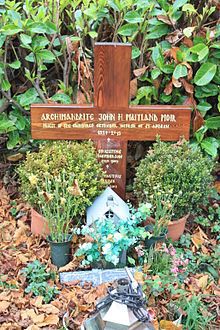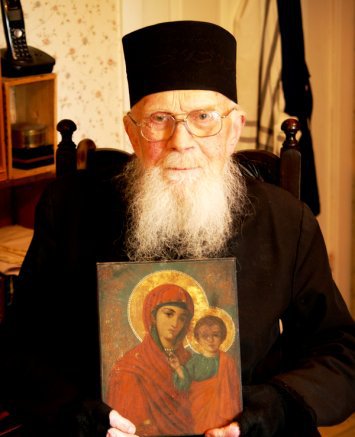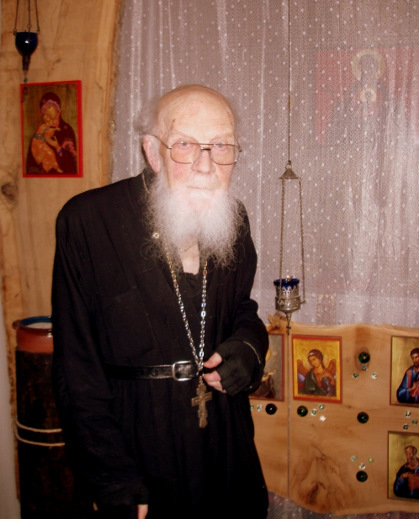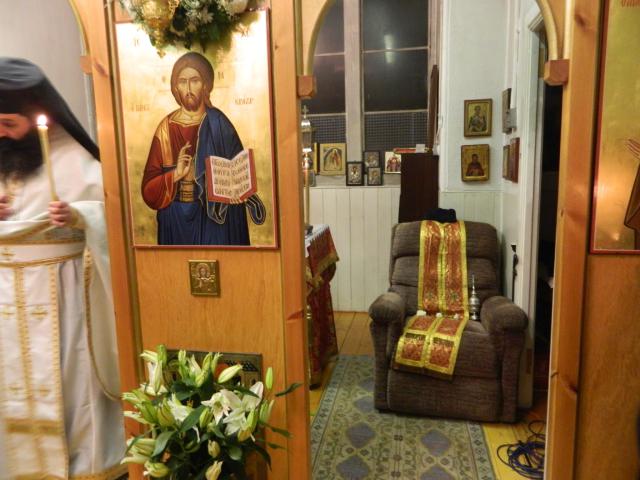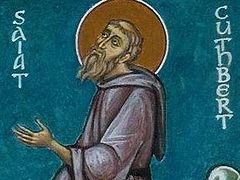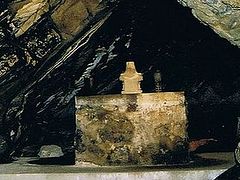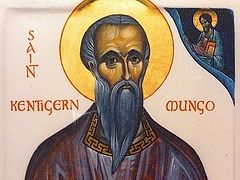The following is a Life from an official obituary for Fr. John Maitland Moir, who reposed in the Lord on April 17, 2013. His legacy and spirit is so alive in the Orthodox Community of his former parish. This article was used from the blog, Orthodox Christian Faith and Life.
In the words of parishioners I met there, he now continues to live in their hearts. In his words: “I love you but God loves you more.” I had the rare blessing to meet this priest a number of times back in Greece, in my hometown Thessaloniki, on his way to Mount Athos. The last time we met, shortly before he reposed, his face was so radiant, transparent and otherwordly, words cannot describe.
Our prayers go to all who knew and loved him, and for the repose of his holy soul.
Father John Maitland Moir, Priest of the Orthodox Church of St Andrew in Edinburgh, founder of many smaller Orthodox communities throughout Scotland and Orthodox Chaplain to the University of Edinburgh, died peacefully in Edinburgh Royal Infirmary on the 17th April 2013.
A man of profound holiness and bedazzling eccentricity, of boundless compassion and canny wisdom, utterly selfless and stubbornly self-willed, serenely prayerful and fiercely self-disciplined, Father John will surely earn a place as a unique and outstanding figure in the ecclesiastical annals of Scotland. He was born in 1924 in the village of Currie where his father was the local doctor; his fondness for his mother was always mingled with quiet pride in the fact that she was a member of the lesser aristocracy. The privileged but somewhat severe upbringing of an only child in this household together with a chronic weakness in his knees kept him apart from the hurly-burly of boyhood and directed him from an early age to more spiritual and intellectual pursuits. After his schooling at Edinburgh Academy, he went on to study Classics at Edinburgh University during the war years, his never robust health precluding any active military service. After the war, and a short spell as Classics Master at Cargilfield School in Perthshire, he moved to Oxford to continue classical studies at Christ Church and theological studies at Cuddesdon Theological College.
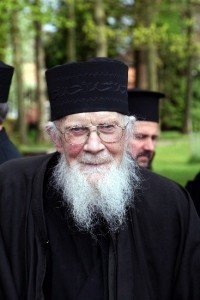
In 1981, he resigned from his position in the Diocese of Moray and travelled to Mount Athos where he was received into the Orthodox Church at the Monastery of Simonopetra. He returned to Britain to serve now as an Orthodox Priest in the Greek Orthodox Archdiocese of Thyateira and Great Britain with utter devotion for a further full thirty years.
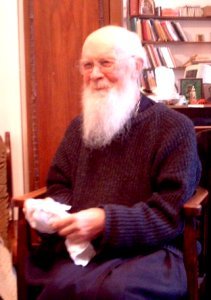
His role as Chaplain to the University of Edinburgh was one he took very seriously. The Chapel of St Andrew, set up at first in his house in George Square and then transferred to the former Buccleuch Parish School by the Meadows, lay at the heart of the University complex; the daily services held there with unfailing regularity and its ever open door provided and continues to provide a firm point of reference for countless students. The Chapel of St Andrew, however, was also the base for his work at the other Edinburgh Universities and throughout Scotland – work now being continued with equal zeal and selflessness by two gifted Priests, Fr Avraamy and Fr Raphael.
Father John subjected himself to an almost unbelievably austere ascetic regime of fasting and prayer, while at the same making himself available to everyone who sought his assistance, spiritual or material, at all times of day and night. His care for the down-and-out in Edinburgh provoked admiration and no little concern in many parishioners who would come to the Church, which was also his home, only to find him calmly serving coffee with aristocratic gentility to a bevy of homeless alcoholics or to find a tramp asleep on his sofa. He was tireless in his efforts to help the victims of torture and persecuted Christians throughout the world. Few days would pass without him writing a letter of support for someone in prison or in mortal danger. He had inherited a comfortable fortune, he died penniless, having dispersed all his worldly assets to the deserving and undeserving in equal measure.
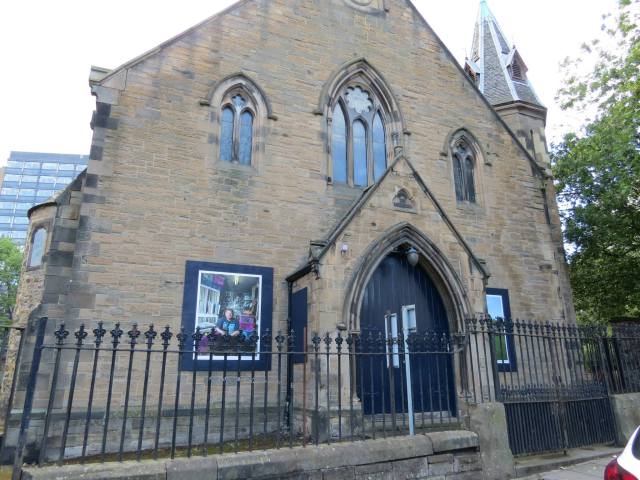 St. Andrew’s Church has acquired this property and is planning to move here in the future.
St. Andrew’s Church has acquired this property and is planning to move here in the future. His habits of life would have marked him as a caricature of Scottish parsimony had they not been joined to an extraordinary generosity of spirit. All his voluminous correspondence was meticulously hand-written on scraps of recycled paper and dispatched by second-class mail in reused envelopes, whether he was writing to Dukes and Prelates or to the indigent and distressed. For many years, he was a familiar sight on the streets of Edinburgh as he passed by on his vintage electric bicycle, his black cassock and long white beard furling in the wind.
As his physical strength ebbed away, he was comforted by the love and care of those who looked to him as their spiritual father and by the ministrations and devotion of his fellow clergy. He was also tended by the medical expertise of the Greek doctors of the Community towards whom he never ceased to express his gratitude.
The last year of his remarkable life was perhaps the most remarkable of all. Completely bed-ridden, nearly blind and almost totally deaf, he devoted himself even more fully to prayer, especially to prayer for the continued unity, harmony, well-being and advancement of the Orthodox Communities in Scotland. On the day he died, an anonymous benefactor finally sealed the purchase of the former Buccleuch Parish Church for the Orthodox Community of St Andrew in Edinburgh thus securing a material basis for the realization of the spiritual vision that had inspired Fr John throughout his life.
Read also this ex-Scottish Episcopal priest, who even then, in the 1960s, looked like an Orthodox priest, with a wispy beard and a Sarum cassock, and always the fervent patriot, he once earned an episcopal reprimand for wearing a kilt beneath his cassock, and and who “became a “weel-kent” figure riding a heavy iron bicycle around Tollcross and the Meadows. … Although he lived a quiet life, Father John hit the national headlines in 2001 when he helped shelter an eight-year-old girl from her father.
Defying a court order that the girl should not leave the country without her father’s consent, he helped Ashley-Maria Black and her mother Valerie set up a new life in Greece.
Despite angry visits from the girl’s father Keith Black to his offices he refused to reveal the girl’s whereabouts, despite a court order, claiming Mr. Black was using the girl to “harass” her mother… in “Renown Scottish Orthodox Priest Dies Just Weeks After Completing His Life’s Work.”
May his Memory be Eternal!

